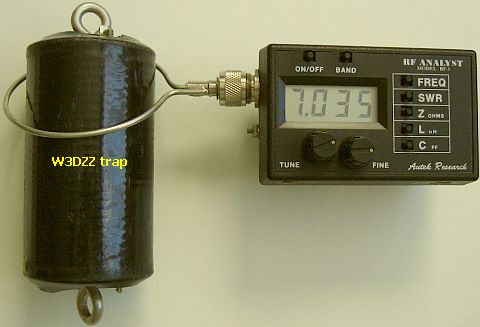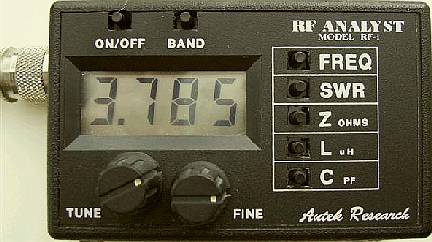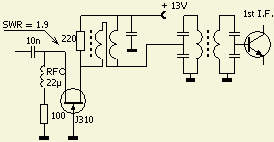
RF1 RF ANALYST
Autek Research
An aquired used RF1 had problems from the start because the unit fails intermittently, usually when I need it most. If you squeeze the cabinet or loosen the screws it works. The buttons sometimes don't function, the knobs have worked their way loose. Power consumption is about 100 mA on the 15 - 30 MHz ranges.
I disassembled the unit more than three times and found: cold solder joints, components barely making contact, one socket pin was shorter than the other's and switch's pins have never been soldered. The soldering is very poor throughout this unit due to poor workmanship quality. The circuit board should be hold in place with 4 screws. It had two.
If it works it is a very useful and practical device for any ham shack. It does what Autek says it will do.
The controls are touchy, they are designed for fine tuning, coarse is too coarse and fine has insufficient range but I can get to the exact frequency that I want with patience and technique.

Dipper

Input SWR
VK6APK's RF1
He wrote:
I was looking at this website with a view to gettering a couple of 3-500Z tubes with the low voltage circuit.
While I was on the site I saw the link to the Autek RF1. I have one of these and for many many years, it has not worked. It worked on the frequency generator part but the measurement part did not work since it was 3 weeks old.
Anyway, I read the article about the poor soldering in this device and so I decided to open my RF1 up and have a look at the soldering. Guess what? It was just like you wrote. Under the magnifying glass, I found 5 bad joints and 2 of them were completely dry. No solder at all.
I cleaned and resoldered these 5 joints and reassembled the unit and it works, just like it did for the first 3 weeks, more than 10 years ago. I wonder why I did not look at it sooner.
MORE INFO:
http://www.autekresearch.com/rf1.htm http://www.seed-solutions.com/gregordy/Amateur%20Radio/Experimentation/EvalAnalyzers.htm http://www.seed-solutions.com/gregordy/Amateur%20Radio/Experimentation/EvalAnalyzers.htm#Introduction![]()